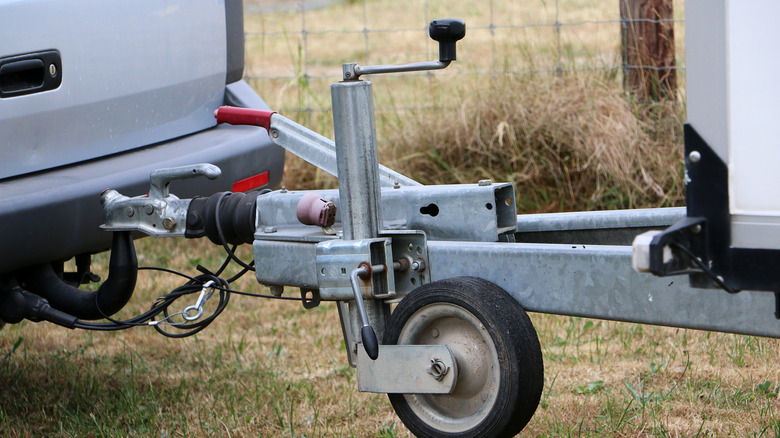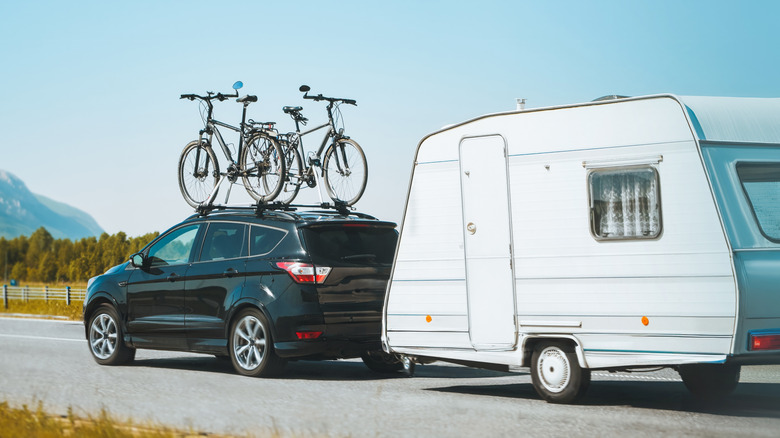Here's How To Safely Brake While Towing (With And Without Trailer Brakes)
Your car's brakes are designed to stop your car, not the extra couple thousand pounds you've hitched to the back. When your trailer doesn't have its own braking system, all that extra momentum, or inertia, makes the simple act of stopping far more complex. One of the first things you'd need to do is keep your speed low at all times, as it's one of the most effective ways to maintain control when towing. A good rule of thumb is to stay below 45 mph. This gives you ample time to react to changes on the road. Another crucial rule is to give yourself way more stopping distance than you think you need — roughly double what you'd need for a solo vehicle. This buffer is your best friend and prevents any panic braking that can lead to disaster.
If you're driving a manual, use it to your advantage by downshifting before you need to brake. This technique, known as engine braking, helps slow the whole rig down without putting too much pressure on your primary brakes — just don't rely on it too much, as that's a common braking myth and leads to engine strain. Always stay focused on the road ahead, anticipating stops for traffic lights or merging cars. But the smartest thing to do would be to get some practice in a low-traffic area to get a real feel for how your setup responds, before you hit the road for the first time. That said, these tips are just to help you get started. Things change when your trailer has its own brakes, which becomes a legal requirement in many states for trailers weighing over 3,000 pounds. The main types are electric and hydraulic surge brakes, with the former being far more popular.
It's one thing to stop, it's another to stop right
With electric brakes, a controller in the cab is your command center. A properly calibrated system can be set so the trailer brakes engage a fraction of a second before the vehicle's brakes, which keeps the trailer from pushing and prevents jackknifing. Don't just set the controller and forget it, as you must also adjust the gain, based on your load and road conditions. To find the sweet spot, drive at about 20-25 mph in an open area and test the brakes. If the trailer yanks you back, the gain is too high. If it feels like it's pushing, it's too low. Here's how you can properly adjust your electric brakes.
One of the best features of an electric brake controller is the manual override. If your trailer starts to sway, gently applying only the trailer brakes with the manual control can straighten it out. This feature is also invaluable on slippery surfaces like gravel, where using it provides a gentle stopping force without risking locking up your vehicle's wheels. On long descents, avoid the habit of resting your foot on the pedal, as this causes constant friction and premature wear.
Of course, a safe trip starts long before you turn the key. Routinely inspect your vehicle for worn pads or low fluid, especially when you tow often. For ultimate peace of mind, consider installing a breakaway system. These automatically engage the trailer's brakes if it ever detaches from your vehicle. How you load your trailer is just as critical. Improper weight distribution, like having too much weight on the hitch, can cause the front of the trailer to dive during hard braking. Once you have braking mastered, you can tackle the other classic towing challenge: backing up your trailer.

